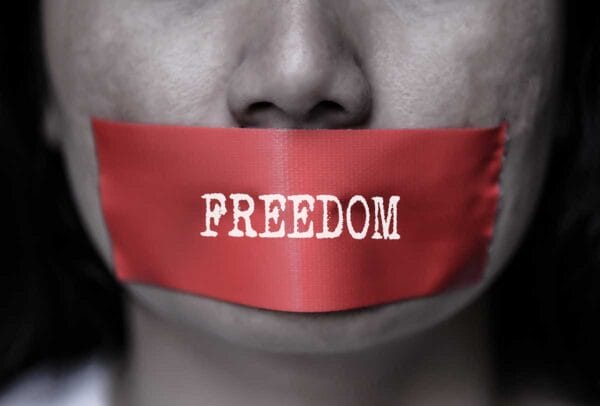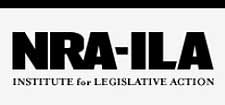Opinion

Gun control advocates are intent on destroying the First Amendment rights of the firearms community.
On November 3, the U.S. Supreme Court granted cert in National Rifle Association of America v. Vullo. In it, NRA alleges New York officials used their regulatory authority to target the organization to suppress its First Amendment-protected pro-Second Amendment advocacy. In April 2022, a trio of gun control groups filed a petition with the Federal Trade Commission claiming that any suggestion by the firearms industry that firearms provide protection to their owners or make their homes safer is tantamount to false advertising and should be curbed. In July 2022, California Gov. Gavin Newsom (D) signed AB2571, which purports to ban all firearms-related advertising that a minor (those under the age of 18) might find attractive.
Further, gun control advocates have used dubious litigation to chill firearm industry speech. Multiple courts have endorsed the idea that the way in which a firearm is advertised can offer an end-run around the Protection of Lawful Commerce in Arms Act (PLCAA).
To remind readers, the PLCAA was enacted to codify a longstanding principle of tort law that gun control advocates sought to erode. U.S. tort law has long held that a person or entity cannot be held responsible for a third party’s criminal acts. Simply put: people are responsible for their own behavior, not the behavior of others. Therefore, if a violent criminal acquires and misuses a firearm to commit a crime, it is the criminal who is liable for the conduct, not the company that produced the firearm. Just like how Chevrolet isn’t responsible for the actions of drunk drivers.
Notably, the PLCAA does not protect the gun industry from suits where a manufacturer or seller’s illegal conduct was the proximate cause of the injury giving rise to the suit. Anti-gun organizations have increasingly tried to pervert this straightforward exemption to effectively undo the entire PLCAA.
On January 22, a panel for the U.S. District Court of Appeals for the First Circuit revived a lawsuit brought by the Mexican government against prominent members of the U.S. firearms industry. In doing so, the court endorsed Mexico’s allegation that members of the firearms industry “design and market their guns in such a way as to make them attractive to the illegal market, and that they benefit financially as a result,” and that this would get plaintiffs around the PLCAA. In summarizing Mexico’s claim, the opinion noted,
Mexico alleges that defendants not only design their guns as military-grade weapons; they also market them as such. Defendants’ marketing materials depict their weapons in use by or in proximity to military and law enforcement personnel and contain other references to military and law enforcement.
Rather than demonstrating some sort of malice, that U.S. gun companies stress the suitability of their firearms for professional applications when marketing to law-abiding Americans makes perfect sense to anyone with even a passing understanding of the half of American households that own firearms or Second Amendment jurisprudence.
First, consider the reasons the military and law enforcement utilize firearms. The military (under the Department of DEFENSE) uses firearms to defend the country. Law enforcement uses firearms to protect and defend themselves and their communities. This might come as news to anti-gun bubble dwellers, but law-abiding Americans use guns for the exact same purposes.
As previously noted, a November 2023 NBC News national poll reported that “More than half of American voters — 52% — say they or someone in their household owns a gun.” In June 2023, Pew Research Center asked gun owners about the reasons they own a firearm. Pew reported, “Nearly three-quarters of U.S. gun owners cite protection as a major reason they own a gun.” 91-percent cited protection as a reason they own a gun.
The Crime Prevention Research Center’s annual report “Concealed Carry Permit Holders Across the United States” showed that there are 21.8 million carry permit holders across the country. An analysis of Centers for Disease Control and Prevention survey data by Florida State University Professor Gary Kleck showed that Americans likely use guns defensively more than 1 million times per year. A 2021 survey conducted by Georgetown University Political Economist William English found that “guns are used defensively by firearms owners in approximately 1.67 million incidents per year.”
Of course, law-abiding gun owners using firearms for some of the same reasons as the military and law enforcement isn’t just popular, it’s protected by the U.S. Constitution.
U.S. Supreme Court Justice Antonin Scalia’s opinion in District of Columbia v. Heller (2008) made clear, “the inherent right of self-defense has been central to the Second Amendment right.” In striking down the federal enclave’s handgun ban, Scalia cited “the need for defense of self, family, and property.” In New York State Rifle & Pistol Association v. Bruen (2022), the Court made clear that this right to armed defense extends beyond the home.
Second, to consider how absurd Mexico’s argument is, think of advertising in different contexts. Advertising a firearm as meeting the qualities for professional service is like promoting that a given fire extinguisher is used by professional firefighters or a given toothpaste is recommended by dentists. Television, radio, print, and the internet are replete with ads touting products as “professional” or “commercial” grade.
Of course, law-abiding consumers may rationally be far more interested in professional quality in firearms, than a host of other goods. Defensive firearms need to be relied upon to function flawlessly in the worst moment of a person’s life, with the difference being life or death. Gun owners know that the military and law enforcement rigorously test firearms before putting them into service and that continued performance in the field acts as an ongoing test. It is only rational that many law-abiding gun owners would want firearms that meet these high professional standards to protect what is most important to them – their lives, their families, and their communities.
It is indisputable that tens of millions of law-abiding Americans utilize firearms for some of the same purposes as the military and police and that this conduct is protected by the U.S. Constitution. Further, advertising products as meeting professional standards is ordinary marketing practice and makes perfect sense in the context of potentially life-saving tools like firearms. Therefore, it takes a perverse mind to conclude that firearms advertising stressing the professional application of firearms is actually aimed at some clique of foreign criminals (some of whom have the ability to source actual military hardware) rather than the tens upon tens of millions of law-abiding Americans who use firearms for self-defense.
In the context of government regulation, the U.S. Supreme Court has made clear that “commercial speech does not fall outside the purview of the First Amendment” (Lorillard Tobacco Co. v. Reilly (2001)). In doing so, the Court outlined a four-part test (Central Hudson Gas & Elec. Corp. v. Public Service Commission of New York (1980)) to determine whether a given restriction on commercial speech violates the First Amendment. (1) As long as the speech concerns lawful activity, (2) the government must assert a substantial state interest that is purportedly advanced by its regulation on speech, (3) the regulation must directly advance the asserted interest, and (4) the regulation must be narrowest means by which to serve the state interest.
In elaborating on the fourth part of the test in Lorillard Tobacco Co. v. Reilly, the Court explained, “a speech regulation cannot unduly impinge on the speaker’s ability to propose a commercial transaction and the adult listener’s opportunity to obtain information about products.” Clearly, anything restricting companies from advertising about the professional quality of their firearms would deprive law-abiding gun owners of the ability to obtain vital information about lawful products. Moreover, speech restrictions on firearm marketing is of a fundamentally different character than those placed on other products. The courts should level more scrutiny on efforts to restrict speech concerning Second Amendment-protected items than those that don’t enjoy such protection.
Sadly, it appears that the firearms community will once again be forced to vindicate its clear First and Second Amendment rights through costly litigation. Which, given gun controllers’ penchant for abusing the law and the courts, may well be the point.
About NRA-ILA:
Established in 1975, the Institute for Legislative Action (ILA) is the “lobbying” arm of the National Rifle Association of America. ILA is responsible for preserving the right of all law-abiding individuals in the legislative, political, and legal arenas, to purchase, possess, and use firearms for legitimate purposes as guaranteed by the Second Amendment to the U.S. Constitution. Visit: www.nra.org






